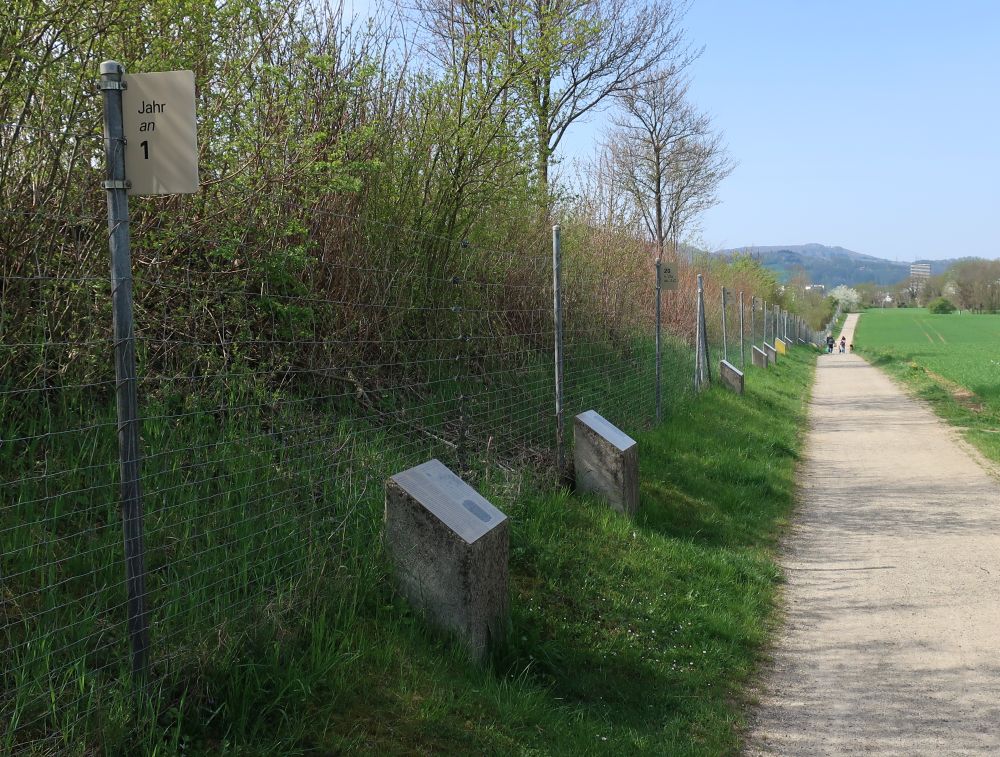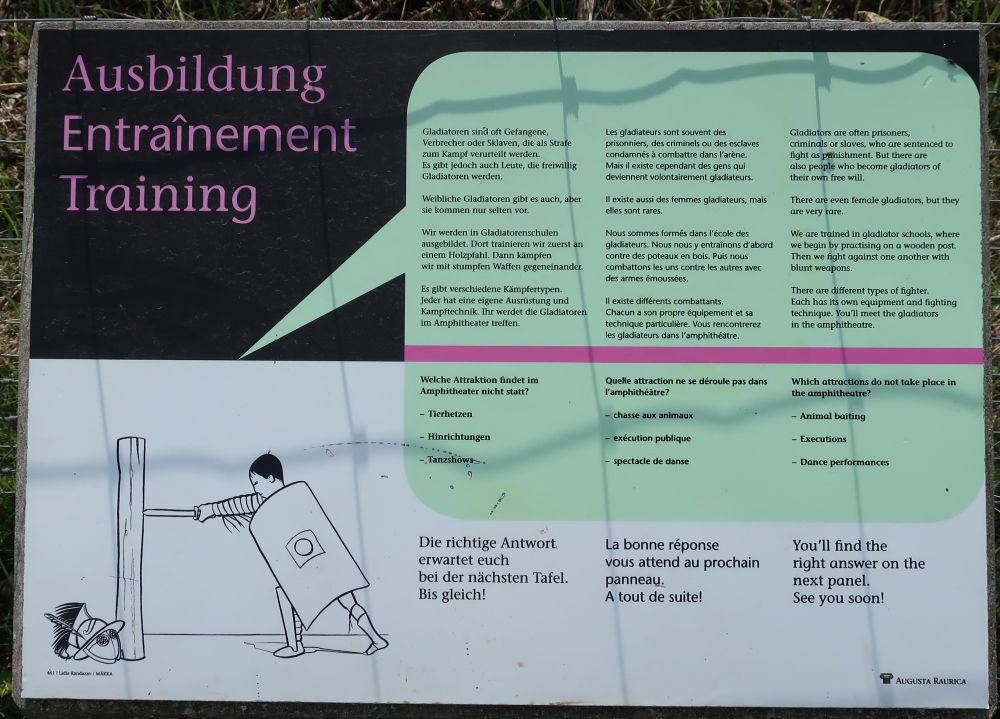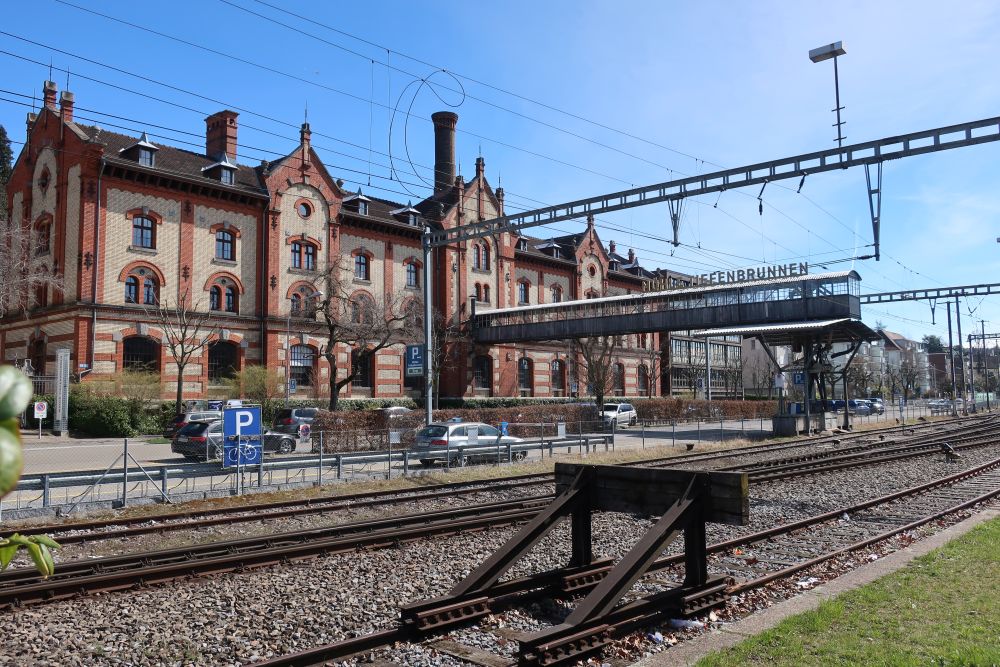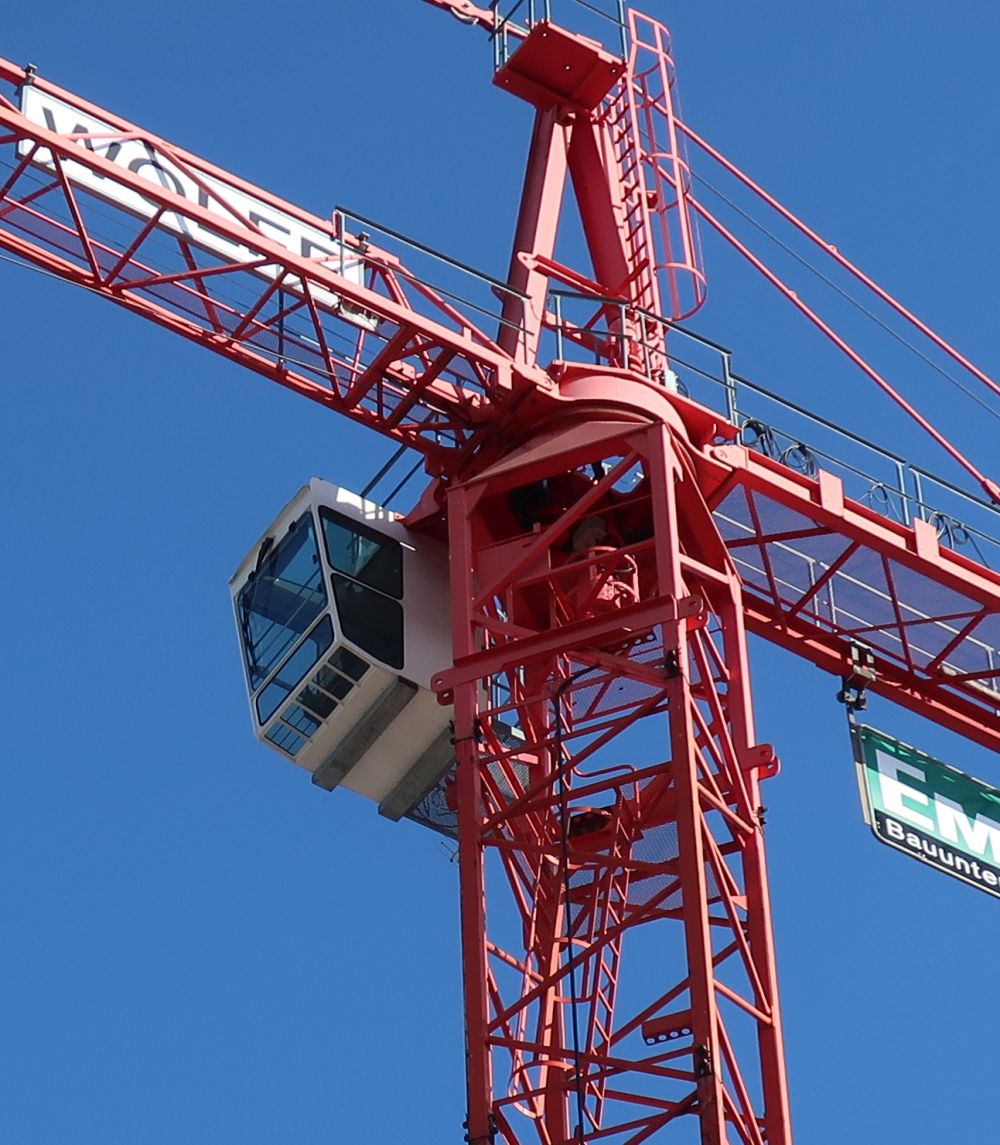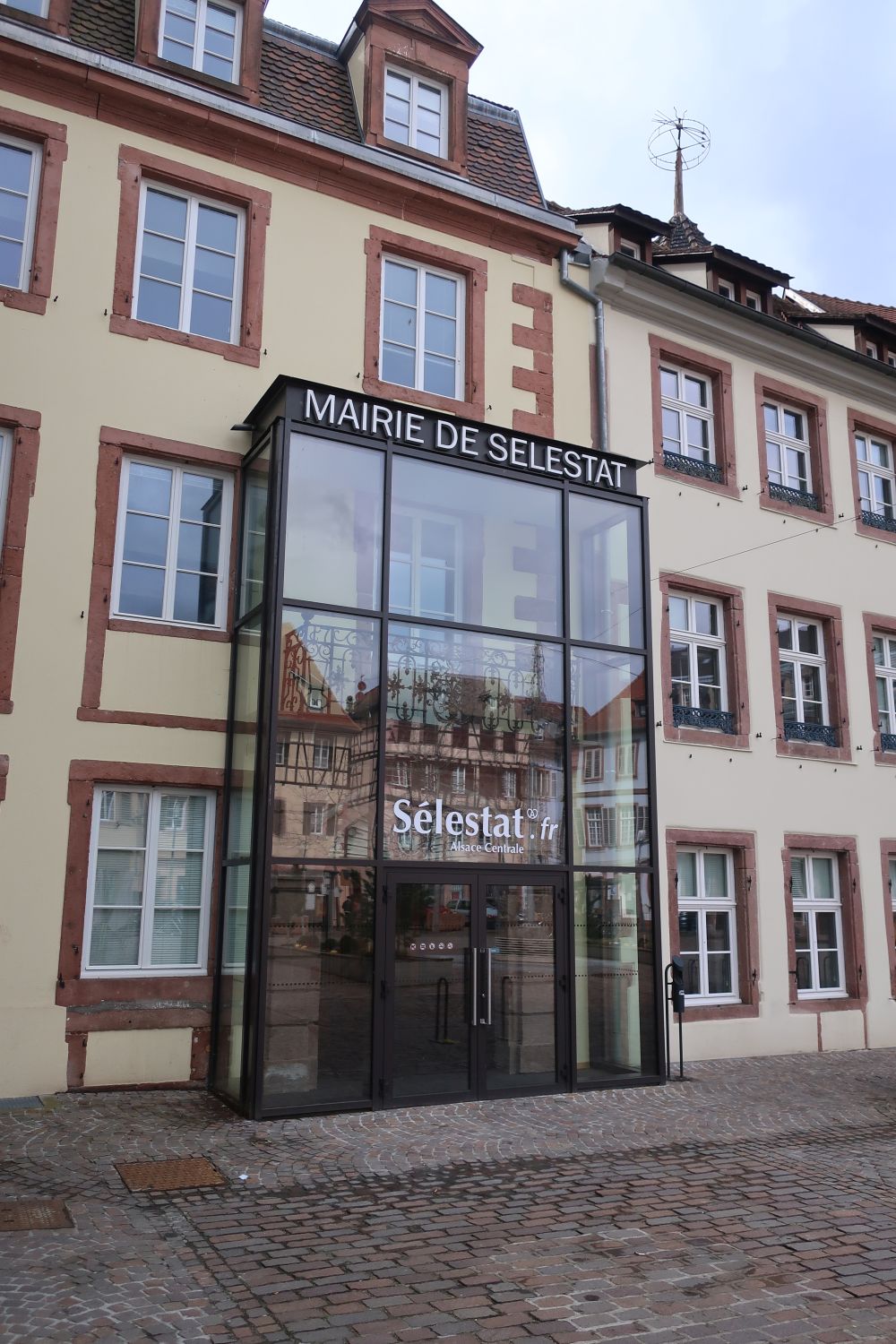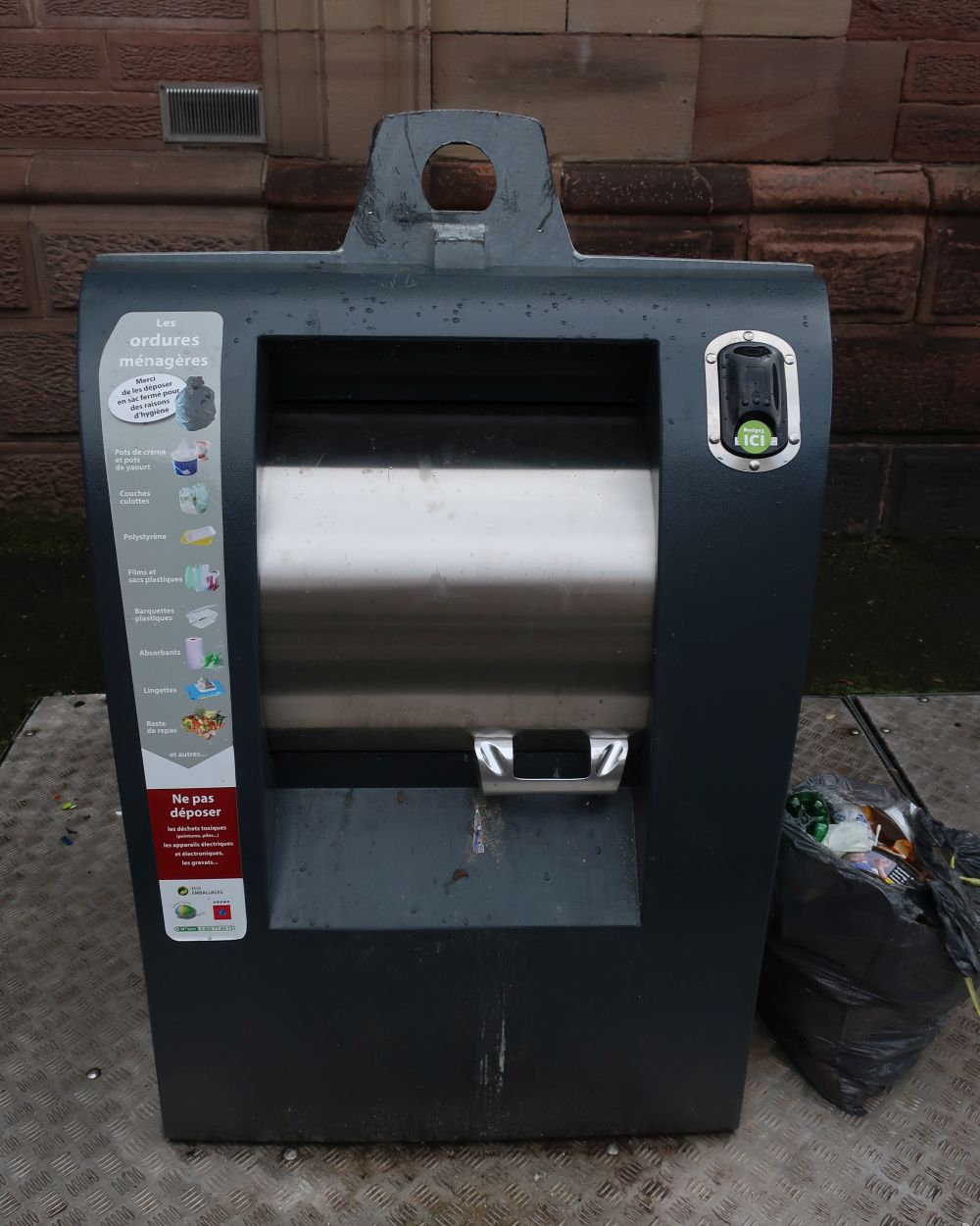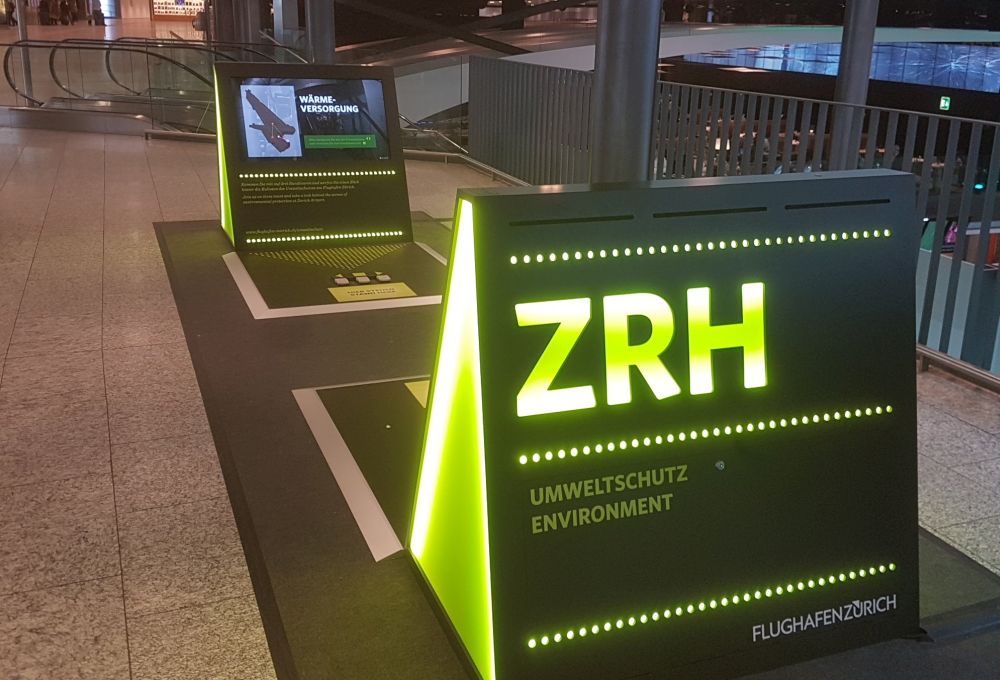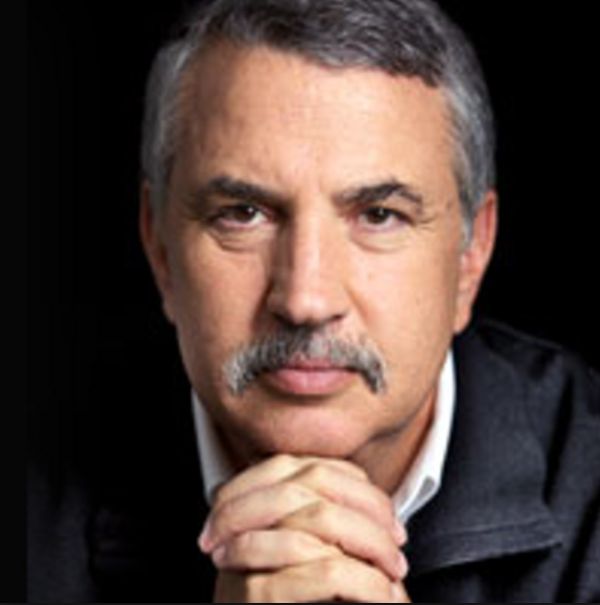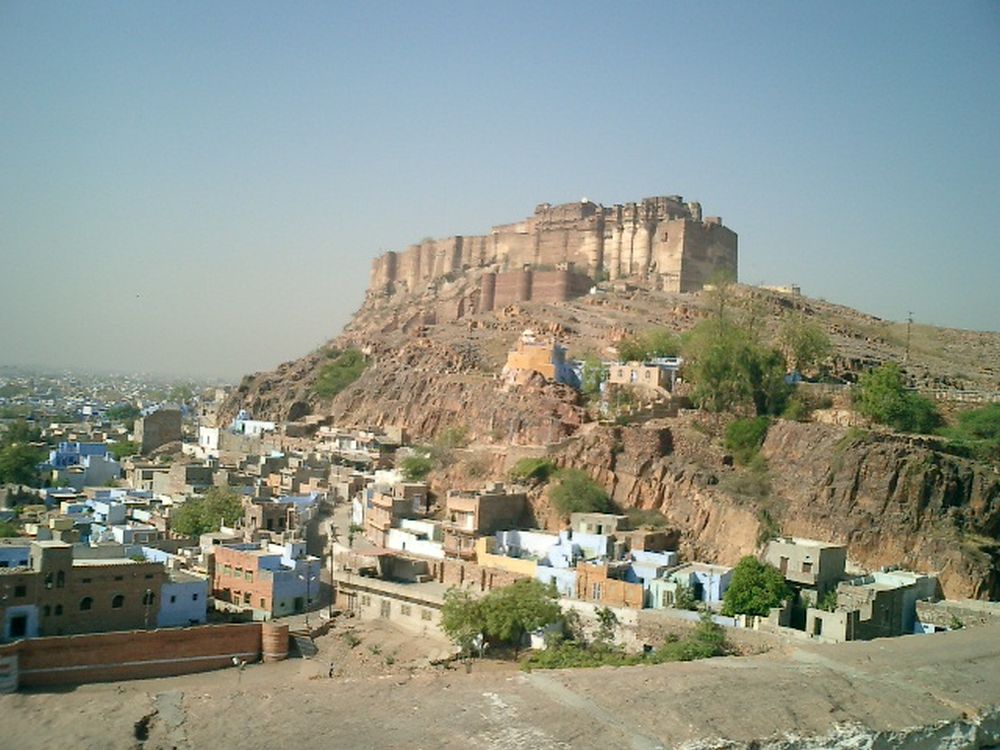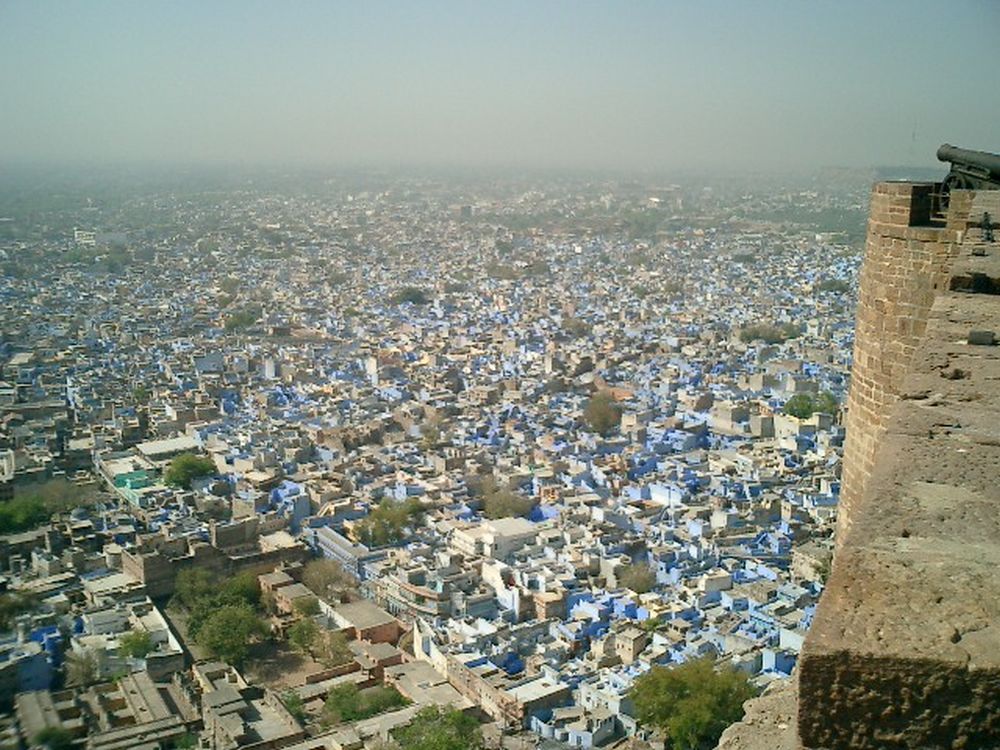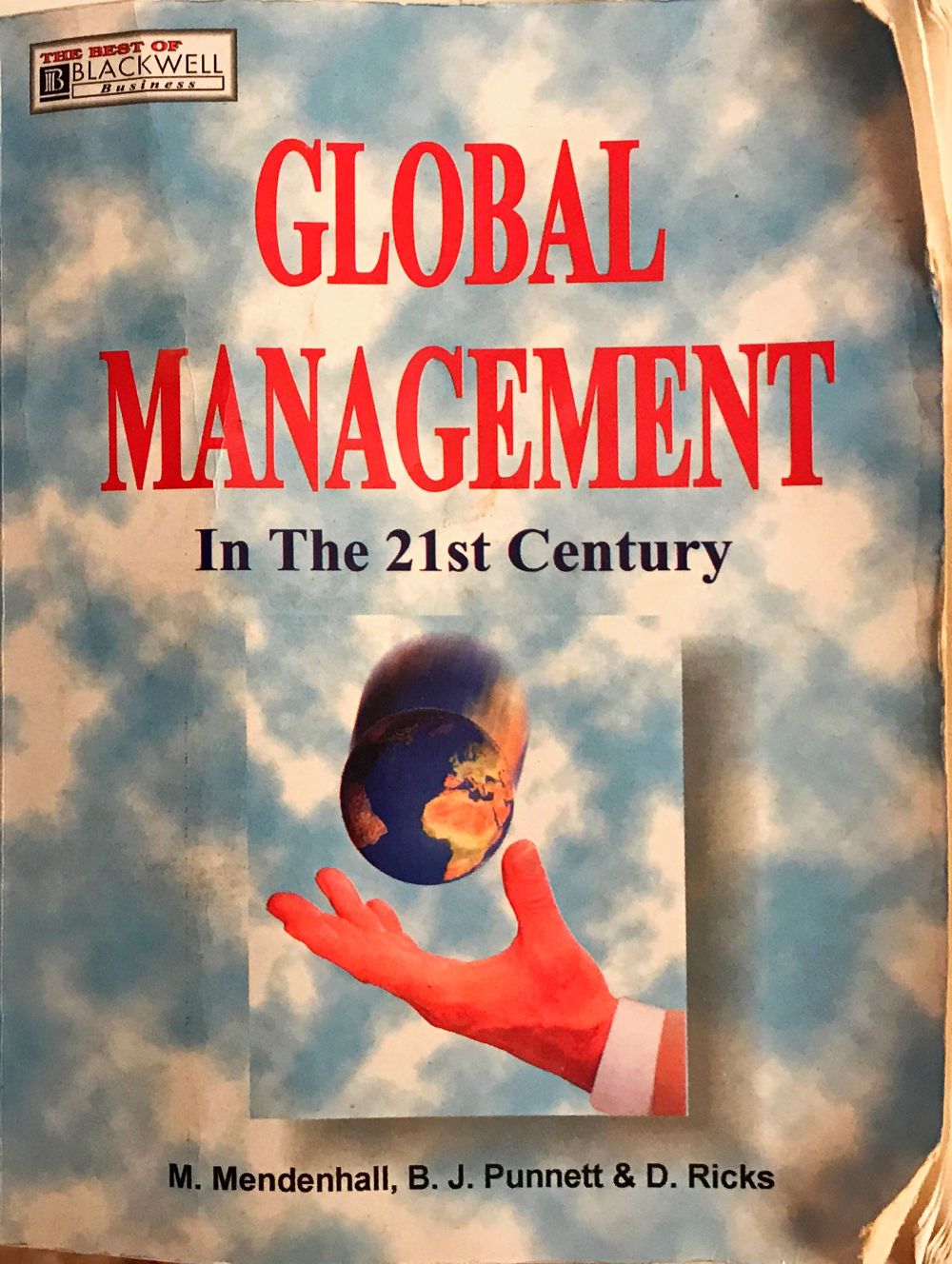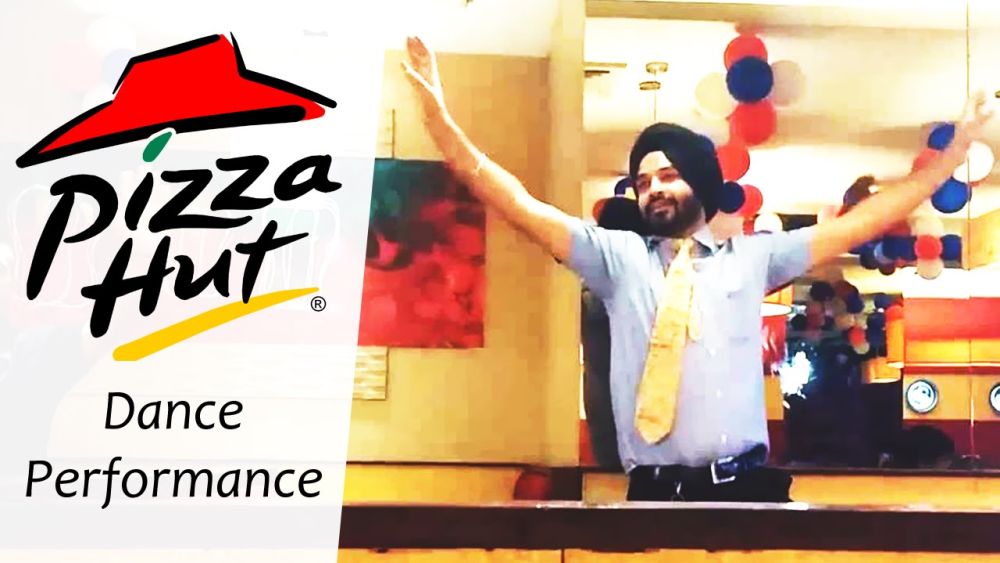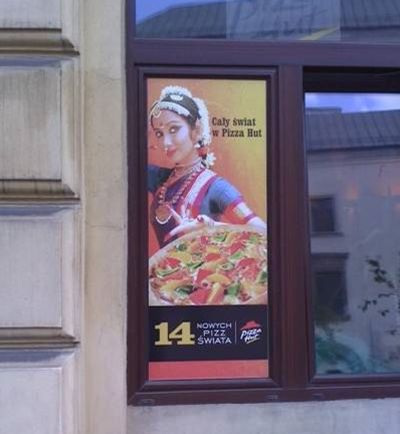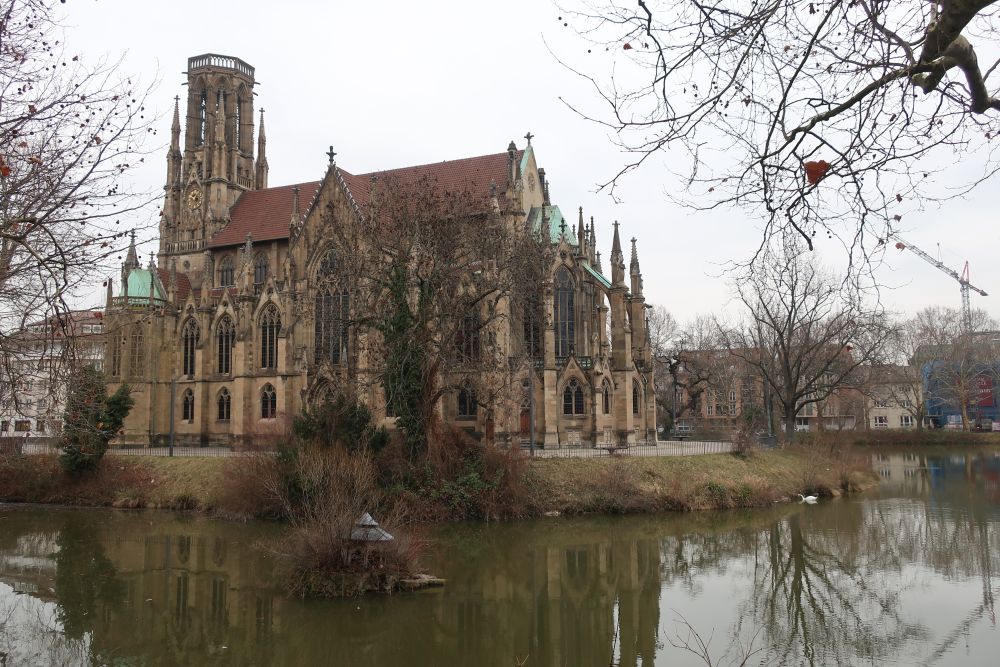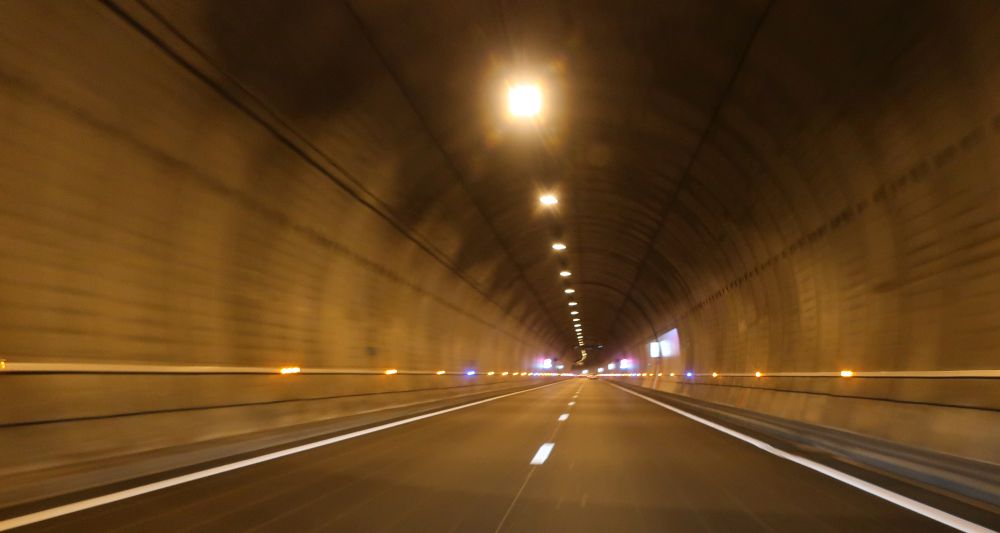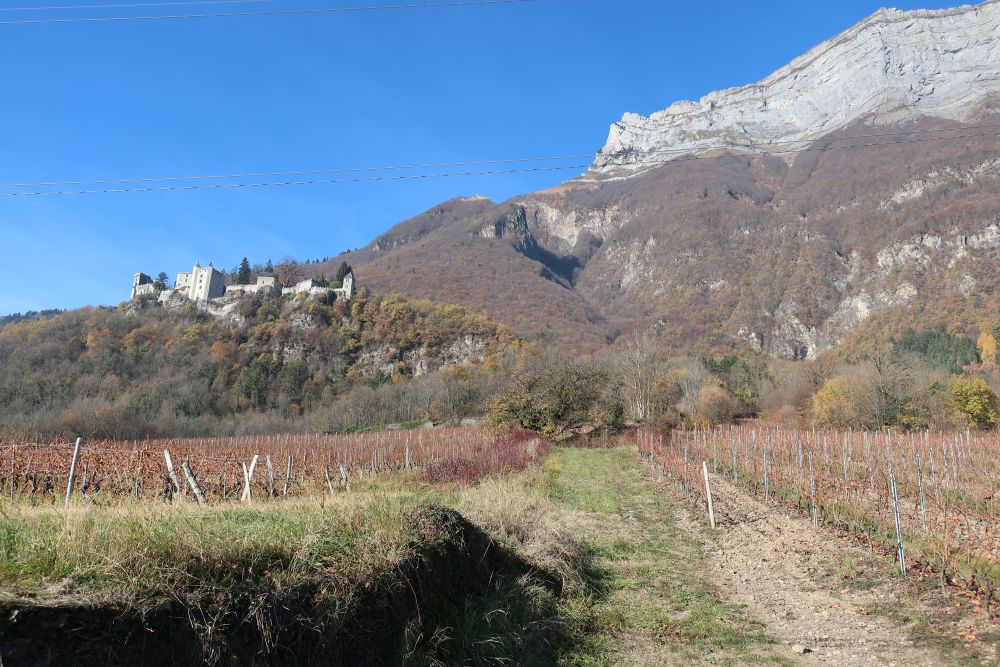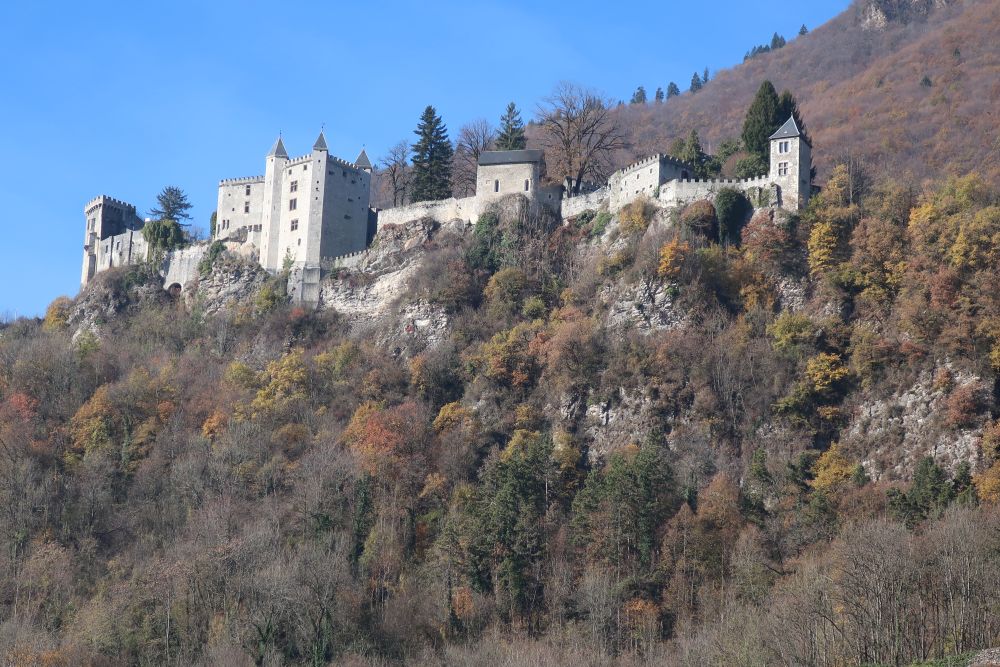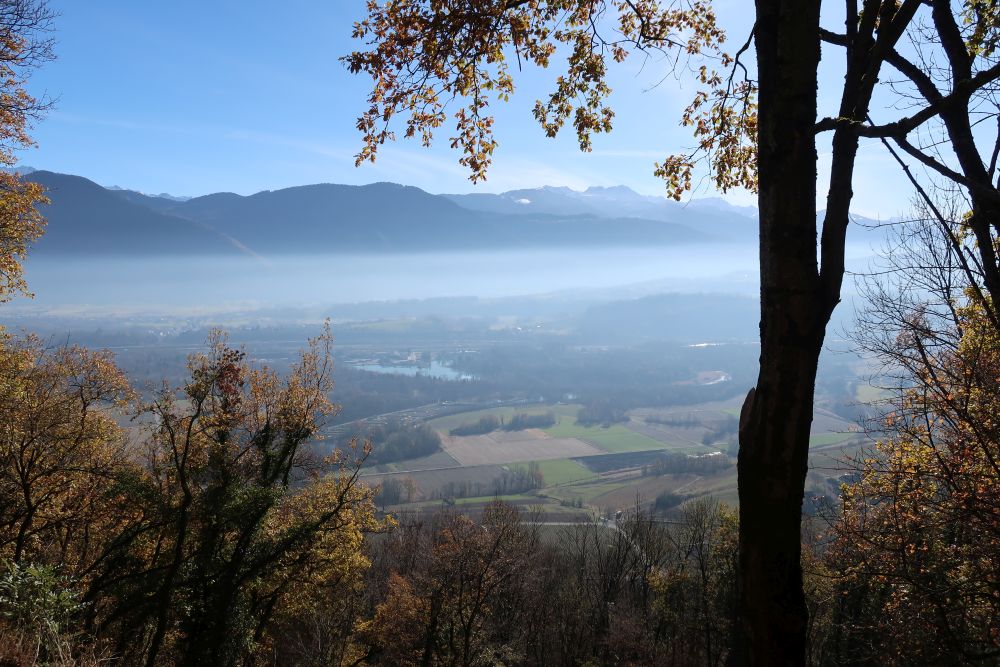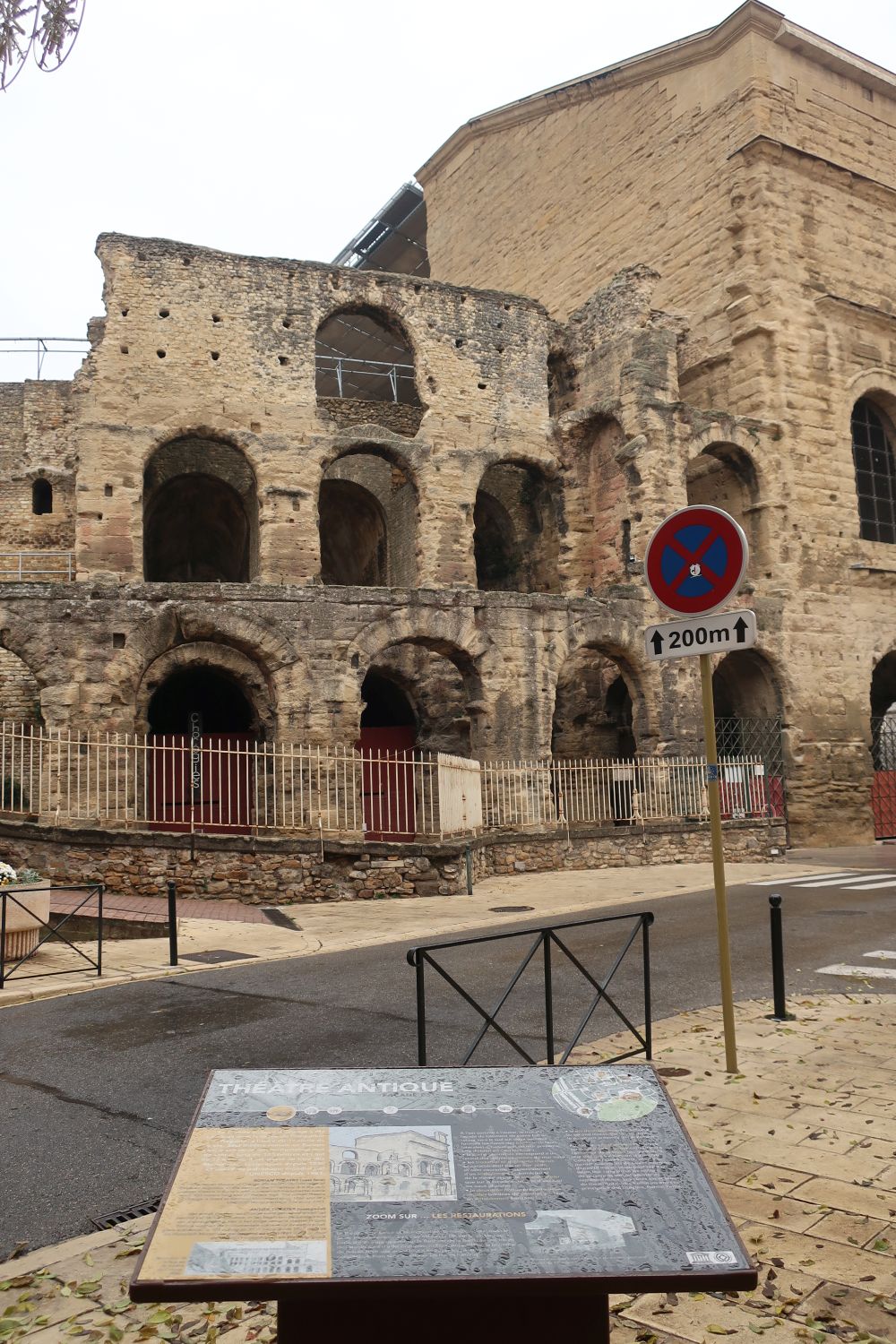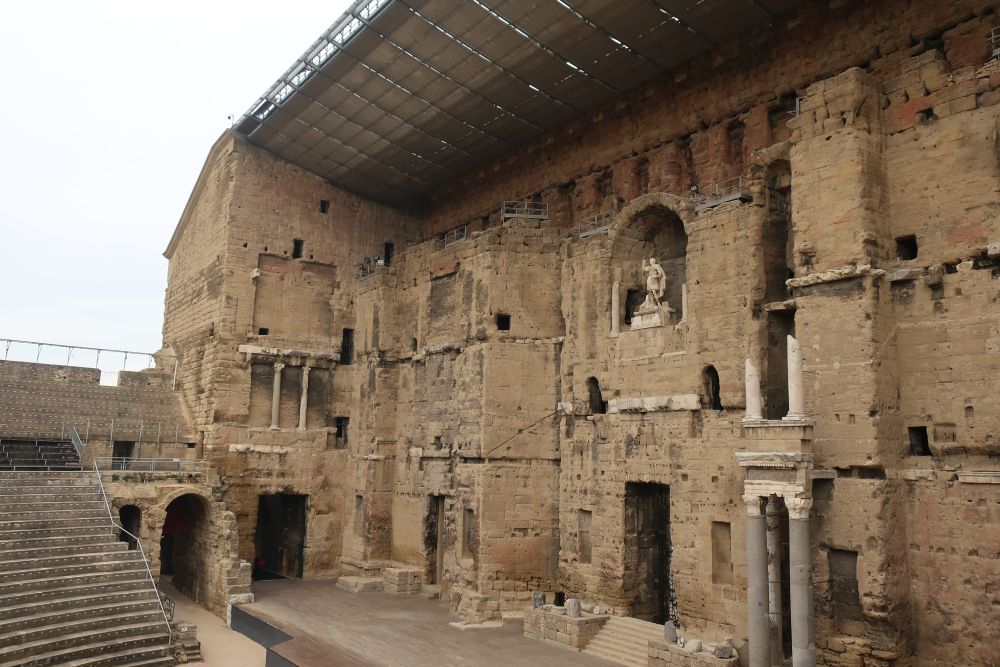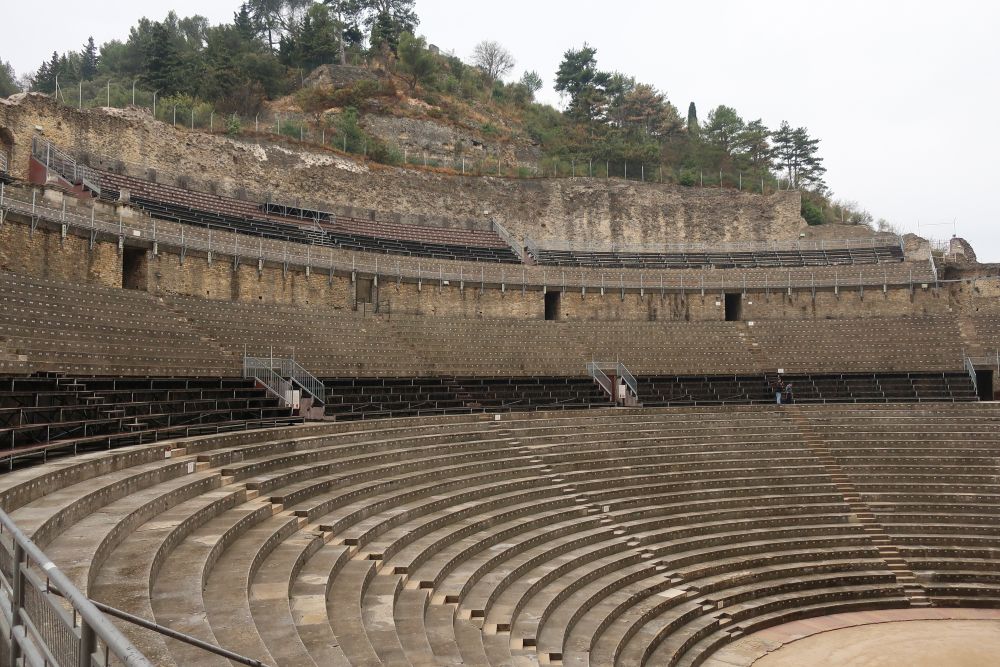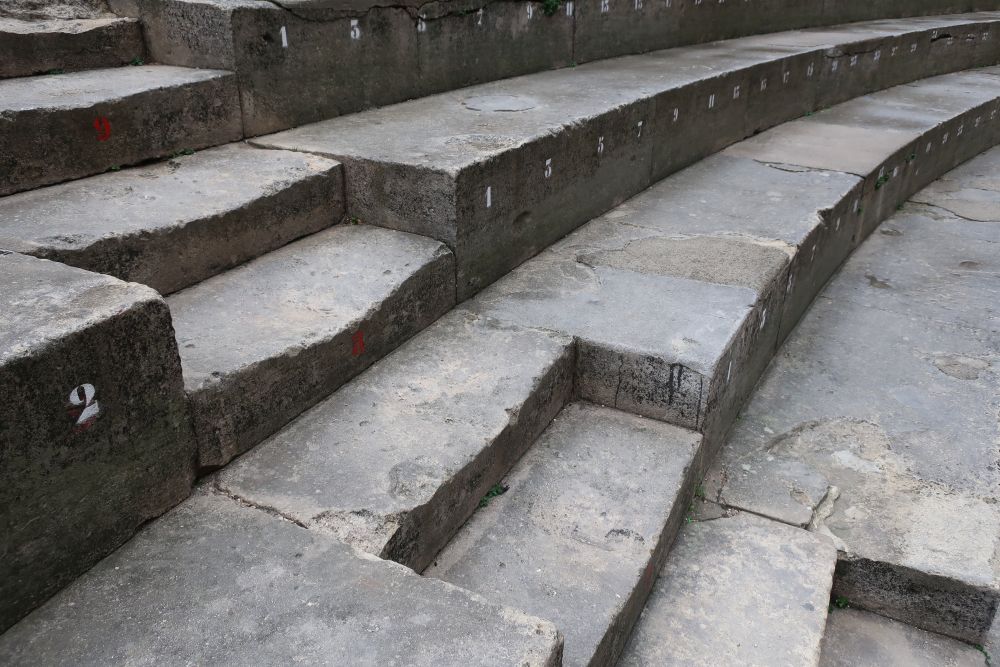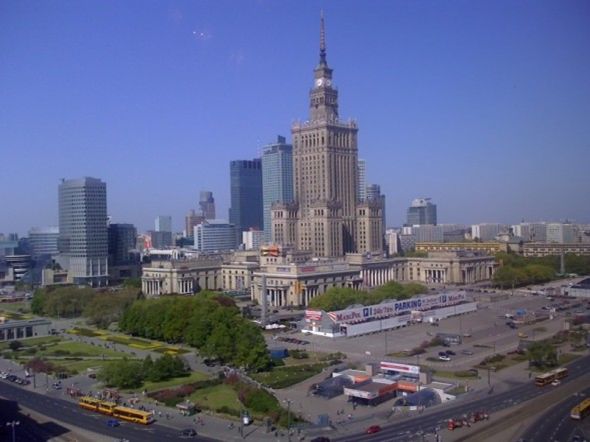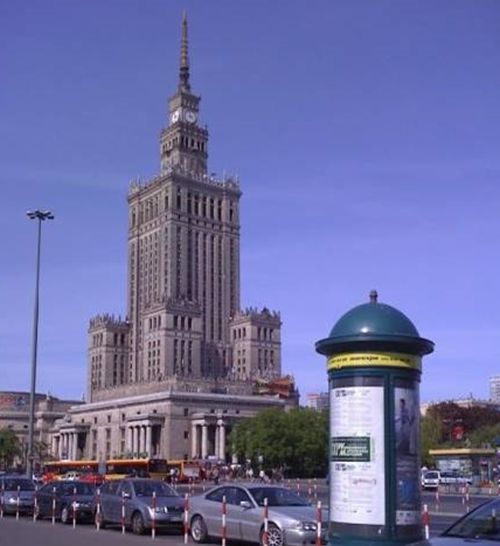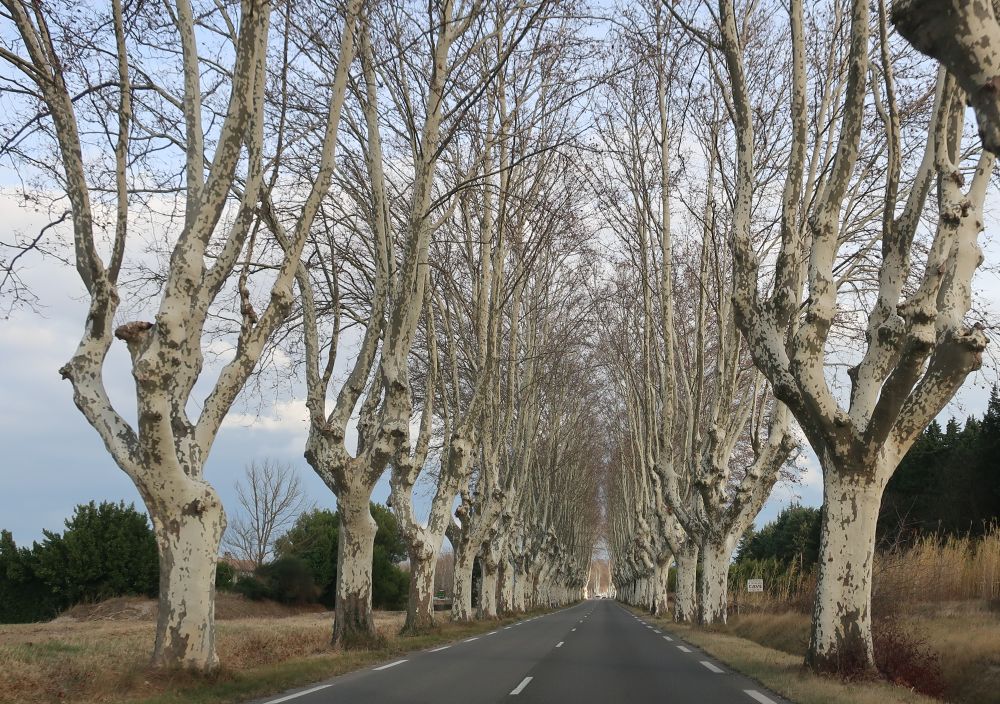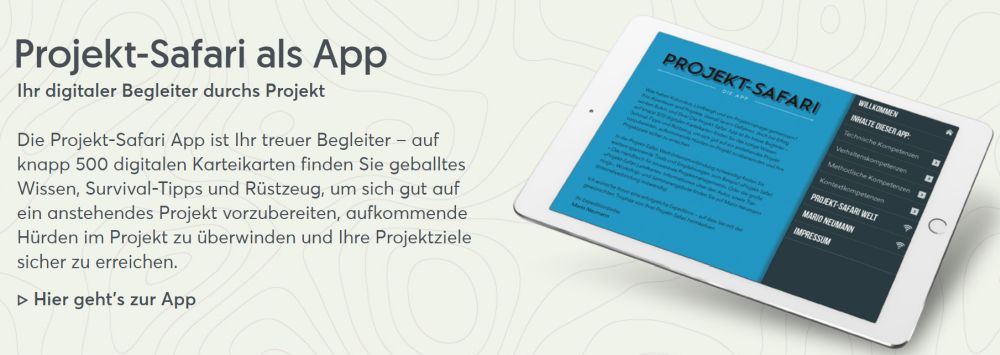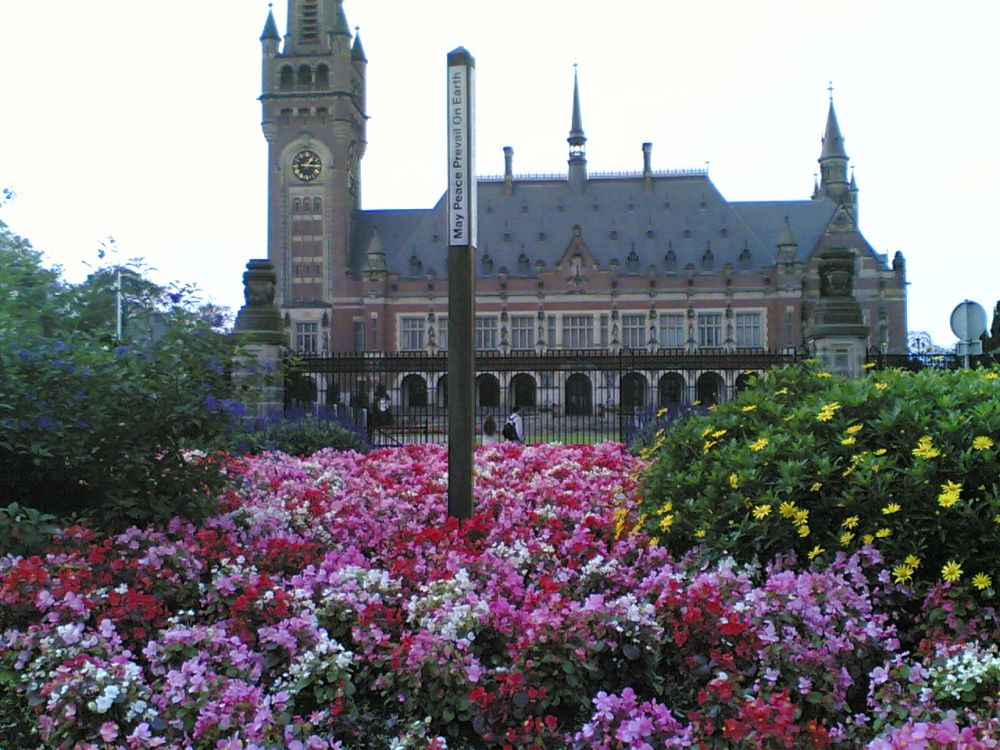User Experience – sometimes referred to as UX – is defined as encompassing all aspects of an end-user’s interaction with e.g. an IT system or, for example, a company, its services, and its products. And although you might not think about it, museums can provide a wonderful insight into the field of UX.
I’ve recently blogged about a wonderful collection of Roman ruins scattered in the Swiss countryside, Augusta Raurica.
What’s really a nice touch is that many of the walking paths have markers that explain about the history of the site:
The displays are a combination of old ones dating back to just after World War II, and relatively new ones.
Now here comes the truly interesting part. The older displays are written in both German and French, and they contain extremely dry, extremely boring historical facts, as this example shows.
The newer displays are written in German, French, and English – and they use a very simple type of writing, and they contain topics that are interesting to a wide variety of people, especially including younger audiences:
It makes you stop and think about who designed the original displays and why. Were people many years ago more literate and interested in boring historical facts? Or is there simply more attention paid today to the user experience?
